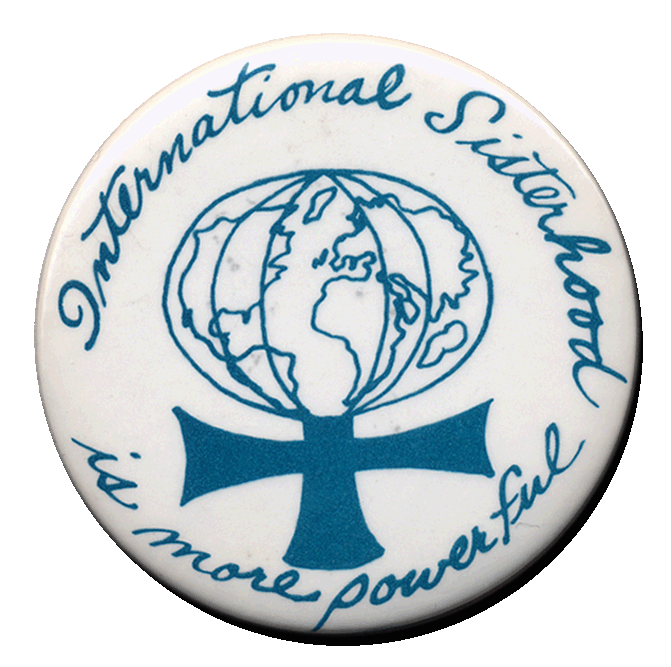The UN declares the ‚Year of the Woman‘, the Women’s Movement the ‚Year of Women’s Struggle‘. After abortion and work, the topics of sexuality and love are now on the agenda.
In her book The Dialectic of Sex: The Case for Feminist Revolution, which is published in German translation in 1975, Shulamith Firestone analyses the meaning of love as “key to the oppression of women today”: “Men were able to think, write and be creative because women gave them all of their energie.”
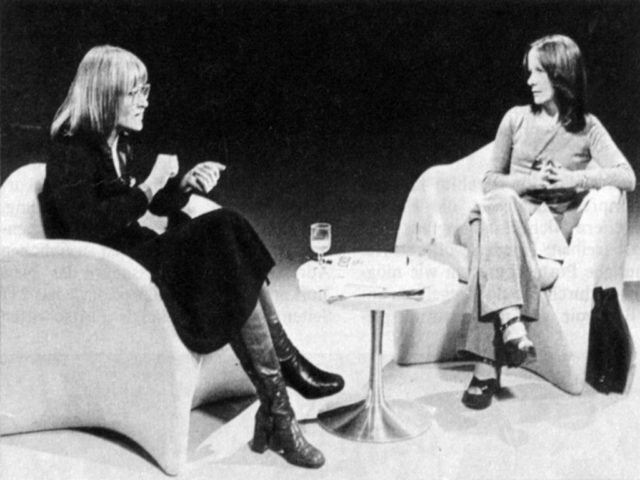
February 6, 1975
The ARD broadcasts the debate between Alice Schwarzer and Esther Vilar live on TV. At this time, the role of Schwarzer as the initiator of the abortion campaign and further protests against § 218 is not yet publicly known. She is only considered author of the first two feminist German-language books (Frauen gegen den § 218 und Frauenarbeit – Frauenbefreiung). Esther Vilar’s book Der dressierte Mann, in which the author depicts women as profiteers of the gender relationship and men as oppressed beings, became a bestseller due to a talk show.
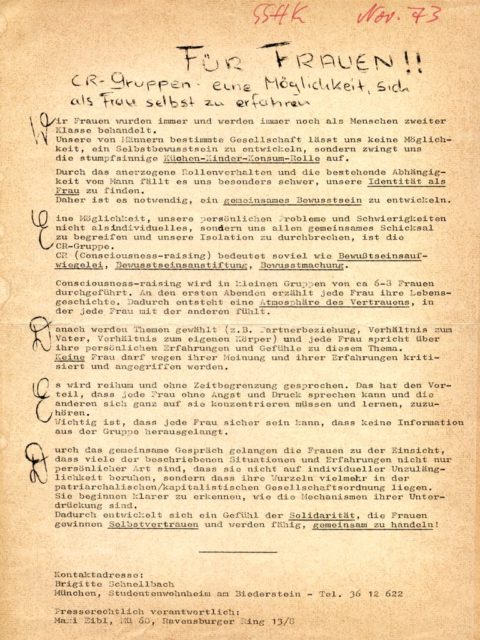
The feminist and the anti-feminist met in public. The press reports with pleasure on the „television battle of the year“ (picture) and the „hen fight“ (FAZ) between the „evil witch with the piercing look“ and the „sweet petting cat“. The program aroused the mind for weeks. Only because of this TV show, the journalist and feminist Alice Schwarzer becomes a public person.
7th-9th February 1975
The United Nations ‚Year of Women‘ is criticized by feminists around the world as an ‚attempt to capture‘ and ‚dilute‘ feminist goals. At the same time they use the year for their own cause. At the ‚National Women’s Congress‘ in Mannheim, the activists are planning to organize ‚Year of the Woman‘ activities. They discuss their strategy for the case that the Federal Constitutional Court, after being appealed to by the CDU / CSU, should overturn the ‚Fristenlösung‘. They argue about the ‚housework wage‘ and they share their experiences in Consciousness Raising Groups (CR groups or self-experience groups).
![UKZ : unsere kleine Zeitung von und für Lesben. Gruppe L 74 <Berlin> [Hrsg.] (FMT-Signatur: Z-L301) UKZ : unsere kleine Zeitung von und für Lesben. Gruppe L 74 <Berlin> [Hrsg.] (FMT-Signatur: Z-L301)](http://frauenmediaturm.de/wp-content/uploads/2018/05/75_00a_UnsereKlZtg_1-480x640.jpg)
February 15, 1975
In Berlin Unsere kleine Zeitung (UKZ) is published as the first German lesbian newspaper since the beginning of the New Women’s Movement (edition of 200 copies). It is published by the group L 74 founded in 1974. Initiator is Käthe Kuse. A little later the Lesbian Action Center (LAZ) – the former women’s group of Homosexuelle Aktion West Berlin, publishes Lesbenpresse and in addition the book Frauenliebe with US-American texts, including What Every Lesbian Should Know by Rita Mae Brown and Charlotte Bunch.
February 25, 1975
In its judgment, the Federal Constitutional Court declares that the ‚Fristenlösung‘ is incompatible with the German ‚Grundgesetz‘. Six male judges refer to the „duty of the state to protect every human life“.

The only female judge Rupp-von Brünneck and another constitutional judge declare in a ‚minority vote‘ the ‚Fristenlösung‘ for constitutionally compliant. There are protests and campaigns across the country. The Frankfurt Women’s Center organizes demonstrative „trips to Holland“, where abortions are legal.
7th-9th March 1975
The International Lesbian Meeting in Amsterdam gives impulse for lesbian groups throughout Western Europe. – In Brigitte Alice Schwarzer publishes the report: Die Heimlichtuerei macht einen kaputt. [The secrecy destroys you]. Using the example of two homosexual women in the province, she describes the destructive consequences of secret homosexuality – and the proud departure of organized lesbians in the metropolises. The author assumes that in Germany alone one to two million lesbians live.
11th-13th April 1975
For the second time, the Evangelische Akademie Loccum organizes a conference on the ‚Emancipation of women‘ with around 100 female and some male participants. Autonomous feminists, women politicians and journalists exchange views on feminist theory and practice.
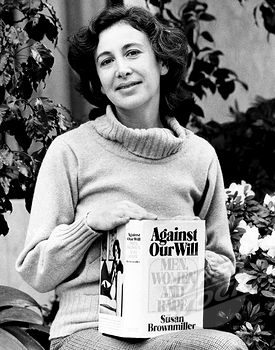
Spring 1975
The fifth issue of the Frauenzeitung appears. The main topic this time is ’sexuality‘. In the US, Susan Brownmiller’s book Against Our Will (German: Gegen unseren Willen 1978) appears. Brownmiller reveals the ‚rape myth‘, which describes rape are individual acts of criminal or dysfunctional men. Brownmiller defines sexual violence as male method to dominate on women. It also exposes the rape of women by soldiers as a systematically used weapon of war. Brownmiller’s analysis becomes the classic of the new feminism, the feminist debate about sexuality and sexual violence the topic of the year.
The First Women’s Movement also focused on the so-called ‚morality issues‘. This term stands for the fight of the ‚morality movement‘ [Sittlichkeitsbewegung] against sexual abuse, rape and prostitution. Lida Gustava Heymann, a pioneer of the First Women’s Movement, had already formulated the use of rape as a weapon of war in 1915 in a speech on the occasion of the International Women’s Congress in The Hague.
13th-15th June
At the National Women’s Meeting in Saarbrücken further actions against § 218 are planned. The actual goal of the protests is the complete removal of the abortion clause. But pragmatists would be willing to come to terms with the ‚Fristenlösung‘ (impunity of abortion in the first three months).
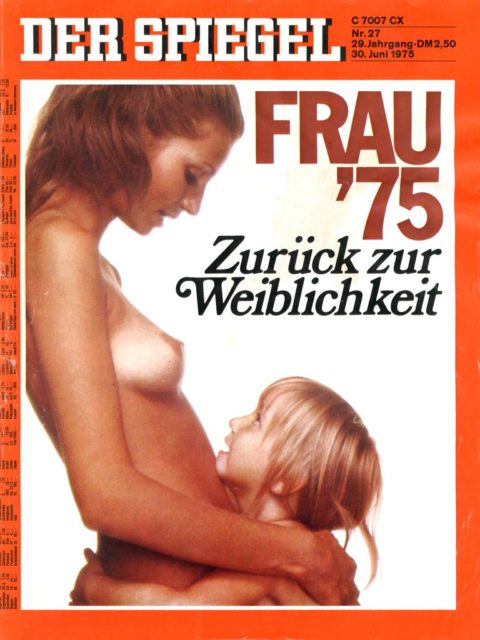
June 30, 1975
While the women’s movement registers a growing number of sympathizers, the Spiegel suggests a trend ‚back to femininity‘ in a cover story. In his Spiegel essay Der anatomische Imperativ author Wilhelm Bittorf asserts that the biological sex difference has much more influence on women and men than claimed by feminists.
June 19 – July 2, 1975
In Mexico the first ‚United Nations World Conference on Women‘ takes place as part of the United Nations ‚Year of Women‘. Delegates from 133 countries pass a ‚Declaration on Equality for Women‘ and a ‚World Action Plan‘ with the aim of improving the situation of women worldwide. The UN General Assembly then declares the years 1976-1985 as the ‚Decade of the Woman‘. One year later, the UN women’s organization UNIFEM is founded.
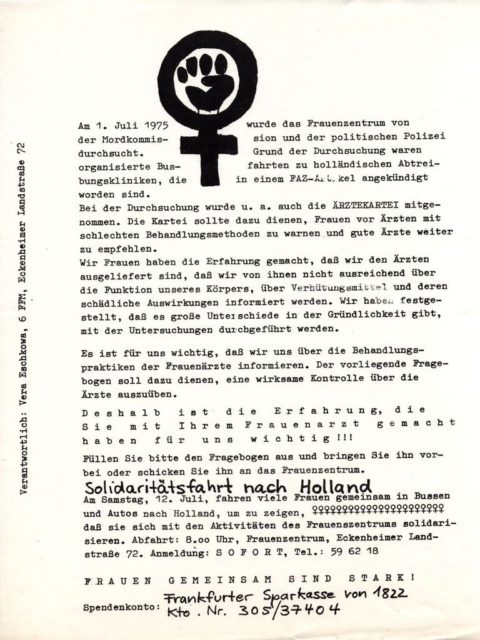
July 1, 1975
During a raid at the Frankfurt Women’s Center, the „Kommissariat für Tötungsdelikte“ seizes the medical register and personal details of the five women present are recorded. Due to the publicly proclaimed, collectively organized trips to Holland and on the grounds that abortion addresses would be conveyed, the entire Women’s Center is declared a „criminal organization“. This does not happen in Frankfurt only, but also in Stuttgart, Munich and Nuremberg. Women receive summons from the prosecution for „assisted abortion“. In many German cities women’s groups organize solidarity actions and rallies.
July 7, 1975
During the 5th internationales forums des jungen films in Berlin, the first screening of the film Wir haben lange geschwiegen takes place. Produced by the Frauenfilmgruppe München, the feature film thematizes central issues of the women’s movement such as housewife’s existence, sexuality and sexual violence.

September 1975
Alice Schwarzer’s Der kleine Unterschied und seine großen Folgen is published at Fischer-Verlag. Following the topics of abortion and work, the author now focusses on questions of love and sexuality. Based on 15 interview protocols with women of all ages and societal situations, she analyzes love and sexuality as instruments of women’s (self-)oppression. The book is the first feminist bestseller and translated into 13 languages. In Germany, the author is now a symbol of feminism itself – and gets caught between the millstones of the nonhierarchically organized women’s movement and the media hype, which knows how to make use of feminist criticism of the „star“ in an antifeminist way.
The press continues the defamatory coverage of Alice Schwarzer, which began after the dispute with Esther Vilar in February. In Zeit, Schulz-Gerstein describes the attacks on Schwarzer as the „longest and most perfidious journalistic manhunt in the history of the Federal Republic“ so far.
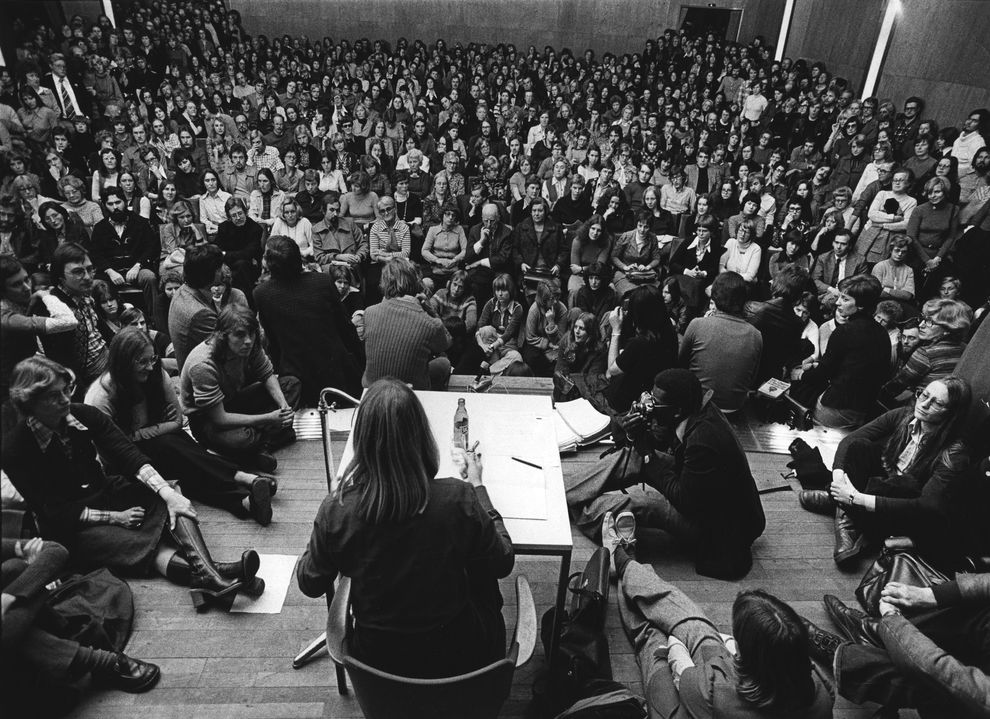
At the same time, it is becoming clear that the women’s movement is continuously diverging into several streams. The basic lines are: The Socialist Feminists, who are close to left-wing politics and for whom class struggle more important than gender struggles (and who are often sent to women’s centers by left-wing groups); the newly emerging and also strongly left-wing followers of a ’new femininity‘ (among other things they are calling for ‚wages for housework‘ and stand for the conviction that women are ’naturally peaceful‘ and the ‚better people‘); and the so-called radical feminists, who as convinced anti-biologists stand for the full equality of the sexes.
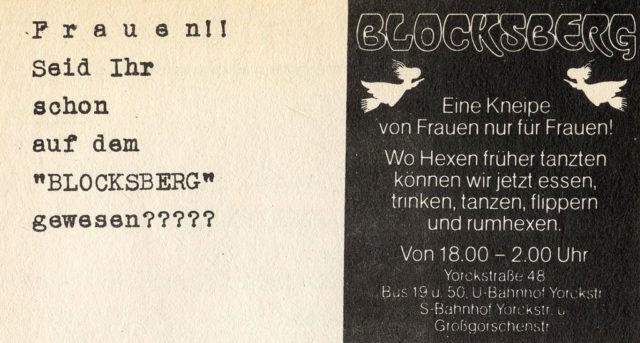
Autonomous women’s projects are on the rise. In Berlin, the first women’s pub in the FRG opens in the Kreuzberger Yorkstrasse: Blocksberg. The Zeit comments: „Women, beer and no men“.
Self-published in Berlin, the book Hexengeflüster is the first German-language feminist book on health and self-help. It conveys a holistic body- and self-image following the model of the US-American book Our Bodies – Ourselves published in 1971. In Munich, a women’s group, which split off from the left Trikont-Verlag, founds the Frauenoffensive, the first women’s publisher of the FRG.
The Frauenoffensive publishes Verena Stefan’s book Häutungen [Shedding and Literally Dreaming]. Analogous to the central debates of the New Women’s Movement, Stefan works through autobiographical experiences and thus creates the genre of ‚Betroffenheitsliteratur‘. Häutungen becomes the most influential novel of the German women’s movement. At the same time, the first programmatic discussions on ‚women’s literature‘ are beginning: is there any kind of ‚female writing‘? Or is there only a feminine condition of writing, as writer Virginia Woolf analyzed in her essay A Room of One’s Own?
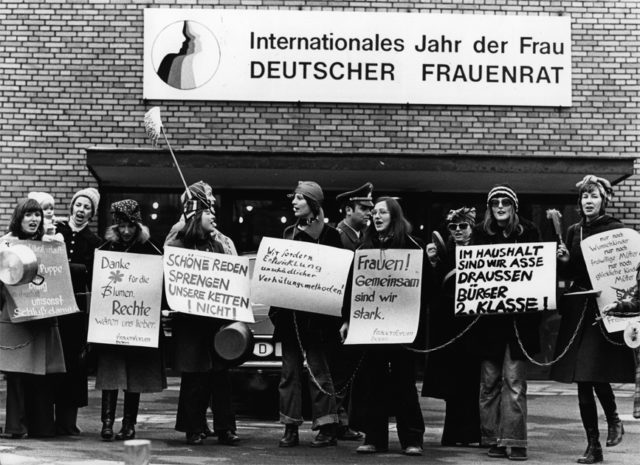
23th-26th October 1975
In several German cities women’s groups start demonstrations and campaigns against § 218. After the decision of the Federal Constitutional Court in February, the SPD / FDP coalition has now submitted a new bill. The draft, which will be passed in the Bundestag at the beginning of 1976, extends the ‚Indikationslösung‘ to include the „social indication“. Since this definition is rather blurred, the women protest against the renewed „extradition of women to the arbitrary interpretation of the law by the doctors.“
November 5, 1975

In Munich, seventeen women open the first German women’s bookstore Lillemore’s collectively. Only two weeks later, the second women’s bookstore Labrys opens in Berlin on the 15th of November. After two years there are already twelve women’s bookstores in the FRG.
November 1975
In the cinemas the pornographic film Story of O starts, which is based on the book by Pauline Réage (pseudonym). The film is about a woman who is deprived of her identity and sexually enslaved. Nevertheless, she finds fulfillment in it.
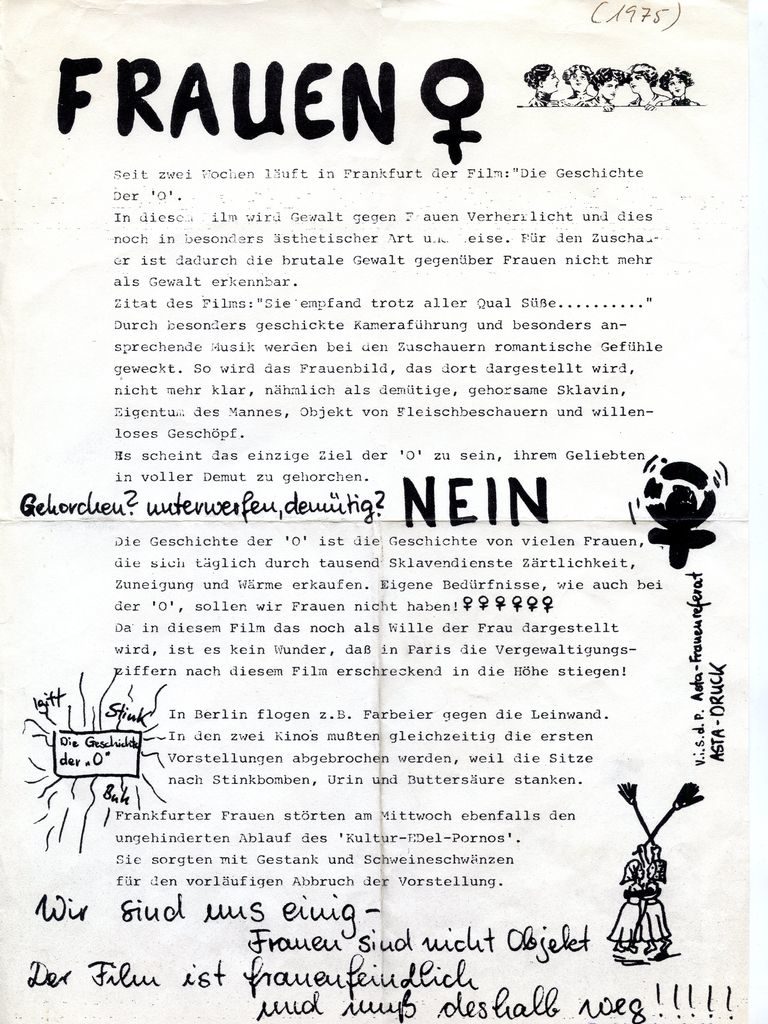
Groups of women storm the cinemas with stink bombs and paint spray cans. They file reported to the police because of trivialized depiction of violence and violation of the law against violent pornography. These are the first feminist protests against pornography in Germany.
December 10, 1975
The ARD presents a summary of the United Nations Year of Women in a special broadcast titled: „Is the end of patriarchy in sight?“ On occasion of a hearing, politicians, scientists and trade unionists are in a process of explanation and dialogue.
![Frauen-Verein [Hrsg.] (1975): Frauenjahrbuch '75 - 1. Aufl. - Frankfurt am Main : Roter Stern. (FMT-Signatur: FE.03.001-1975.[01]) Frauen-Verein [Hrsg.] (1975): Frauenjahrbuch '75 - 1. Aufl. - Frankfurt am Main : Roter Stern. (FMT-Signatur: FE.03.001-1975.[01])](http://frauenmediaturm.de/wp-content/uploads/2018/07/Frauenjahrbuch_1975-368x640.jpg)
During the same conversation, Beauvoir gives a clear refusal to the ’new femininity‘, the mystification of motherhood, and a certain feminist tendency to strive for esotericism: ‚When we are told: ‚Always stay nice and womanly. Leave all these annoying things to us: power, marriage, careers … Be satisfied with your own nature: Earthbound, engaged in human tasks …‘ then we should be on our guard.“
On the initiative of the Frankfurt Women’s Center, the Frauenjahrbuch 75 is published: „The idea of a women’s yearbook goes back to the experience of women’s movements in other countries, whose development we can pursue due to a large number of publications. The Women’s Yearbook should give us the opportunity to keep reminding and analyzing the current state of the movement.“


